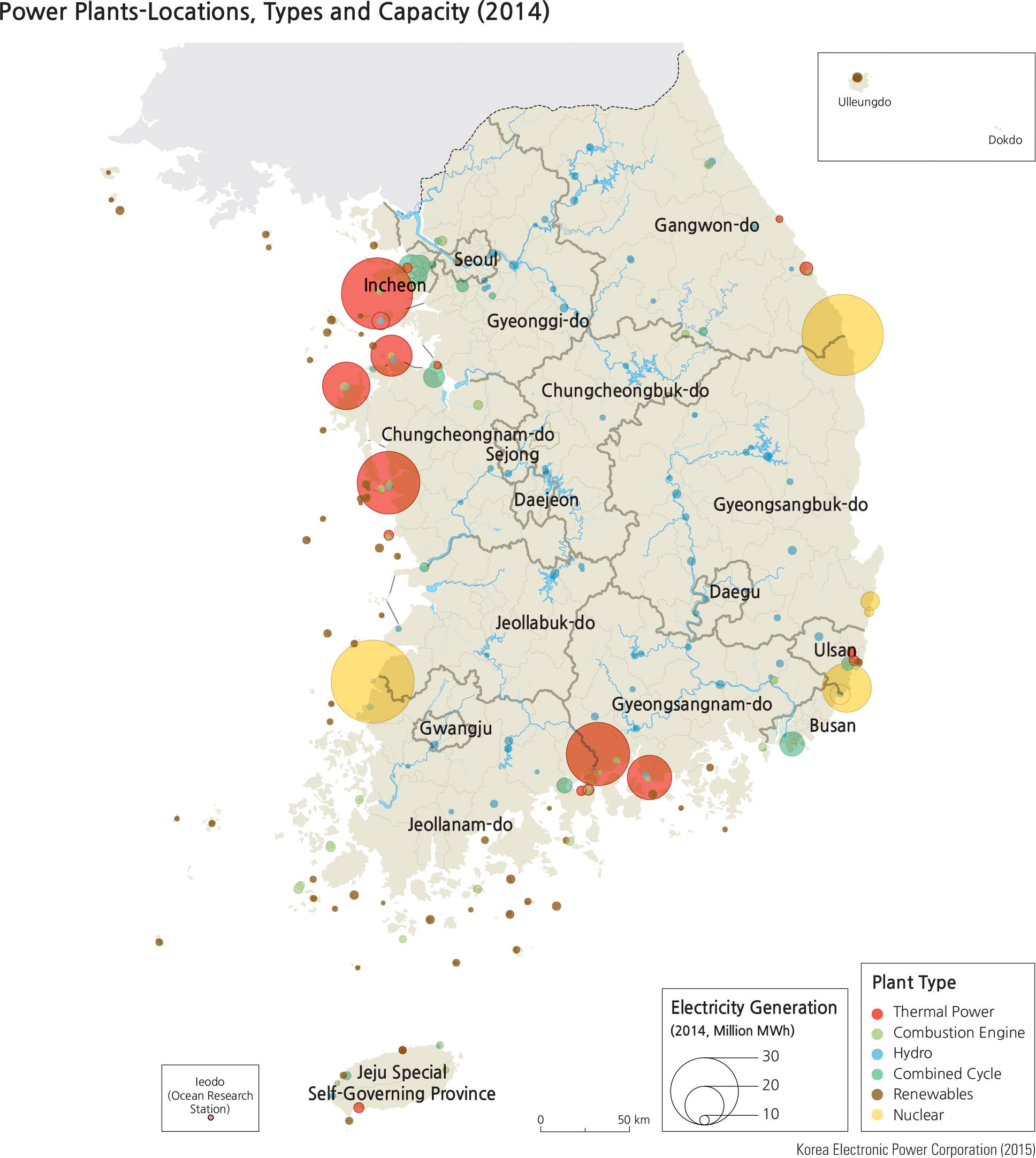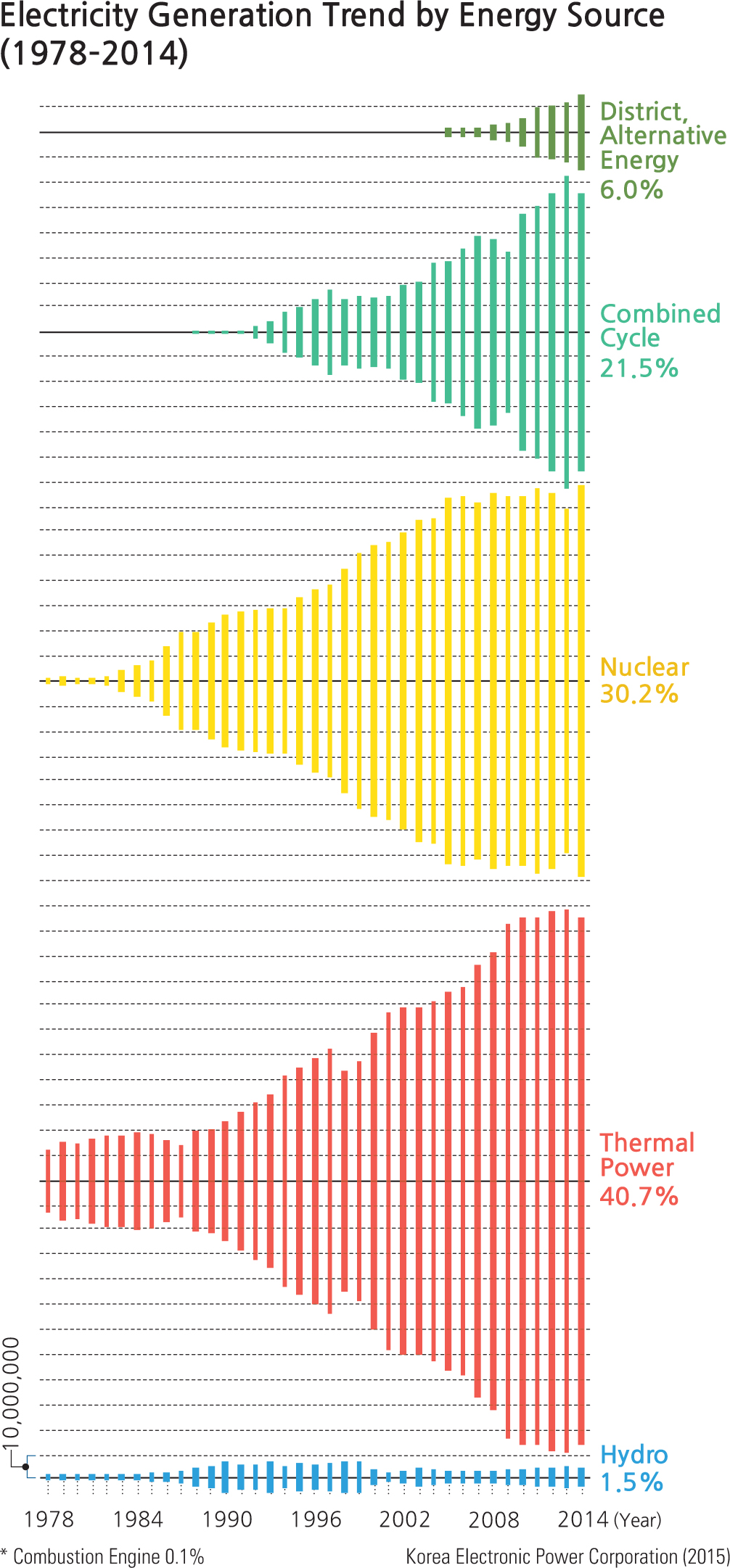Comprehensive Edition
To operate any kind of industry, a major requirement is an adequate supply of energy. Korea relies on imports for primary energy such as oil, liquefied natural gas, coal, and uranium all of which are then converted to final consumer energy such as natural gas, thermal energy, and electricity. The energy consumption (210 million toe [metric tons of oil equivalent]) in Korea in 2013 was at least five times more than 30 years ago. The dependency on imports also increased, from 75.0% in 1981 to 95.7% by 2013. The single most consumed energy source is oil (37.8%), and over 85% of oil is imported from the Middle East. Oil, bituminous coal (27.2% of consumption), and anthracite (2.1%) are converted into thermal energy and electricity. Liquefied natural gas (18.7% of consumption) is converted into natural gas and electricity. Meanwhile, nuclear energy and hydrologic/renewable energies account for 10.4% and 3.8% of the primary energy supply respectively. The industrial sector consumes the largest amount (62.3%) of energy, followed by the residential and the commercial sectors (17.8%), the transportation sector (17.8%), and the public sector (2.2%).
In Korea, electricity is generated using hydrologic power, gas, internal combustion, nuclear reaction, combined cycle power, and cogeneration/alternative energy. The total power generation capacity in Korea increased from 1.94million MWh (Megawatt-hours) in 1961 to 542 million MWh by 2014 (an increase of about 300 times) accordingto the Korea Electric Power Corporation (2015). Internalcombustion accounts for 38.9% (211 million MWh) of total electricity generation. Nuclear power ranks secondat 28.8%, followed by combined cycle power (12.1%). Internal combustion systems increased from 0.002 millionMWh in 1961 to 0.66 million MWh in 2014 (an increase ofabout 320 times). The second highest growth rate appears in the cogeneration/alternative energy sector, with an increaseof 306 times from 0.01 million MWh in 2004 to 3.3 million MWh in 2014. Geographically, most electricity is generatedalong the western and southeastern coasts. The electric power grid delivers electricity from the large, coastal power plants to inland areas.
Brief Interpretation of the Map
Gyeongsanbuk-do Province, and Jeollanamdo Province. Together, they currently produce just less than the same amount of energy created by the thermal facilities. Both of these types of facilities require large amounts of water for cooling purposes. All power plants in these two classes are located at or near the ocean to acquire the necessary cooling water. Much of the power from these two classes of plants is transmitted to inland locations; however, long distance electricity transmission involves the loss of power with distance and significant expense.
|

